Pool dehumidifiers: what are they and how to choose?
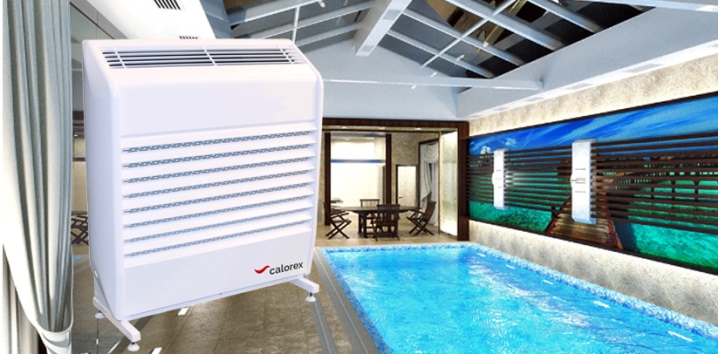
Any pool, like a reservoir with water, is a source of high humidity due to the high intensity of its evaporation. Long-term exposure to humid air on a person can have a negative effect. It also affects building walls, ceilings, and utilities. This means that it is required to dehumidify the air in order to avoid the appearance of fungus and mold in the room. This is usually done with a pool dehumidifier, which may vary in model. Everything will depend on the characteristics of the structure, its dimensions, the area of the pool and a number of other factors. Let's try to figure out what these devices are, and what they are.
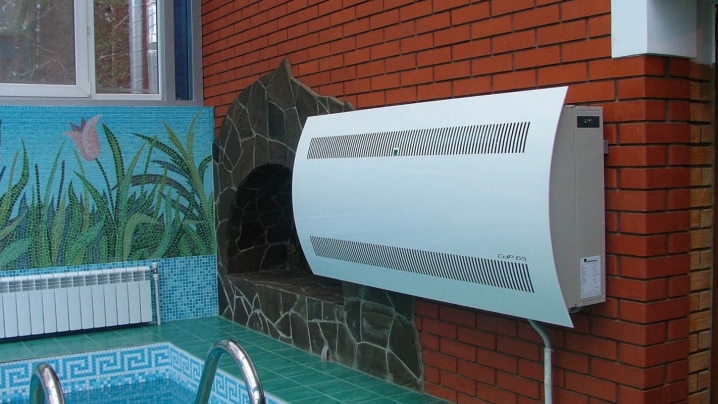
Peculiarities
Typically, in swimming pools, freon-based dehumidifiers are used, which consist of two heat exchangers in series. One of them is a condenser and the other is an evaporator. When humid air enters the dehumidifier, a special cooler moves it to the evaporator, where condensate evaporates and then drains into a special receiver. In the future, it is discharged into the sewer. And cold air, which was previously dehumidified, passes through the condenser, after which it is heated and then removed back to the room.
It should be said that the dehumidifier for the pool is equipped with a special hygrostat, which is responsible for activating the device at a certain moment when the humidity level in the room reaches a certain level... If the indicator is exceeded, then the device starts working, and as soon as it falls, then it turns off.
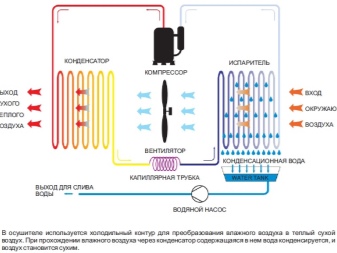
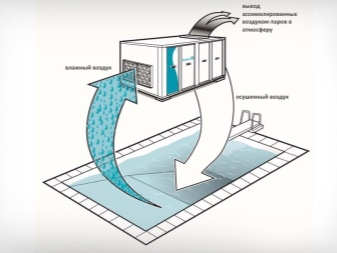
Overview of species and their devices
The different categories of pool dehumidifiers are usually divided according to several criteria. Let's try to characterize each type and figure out which devices are present in them.
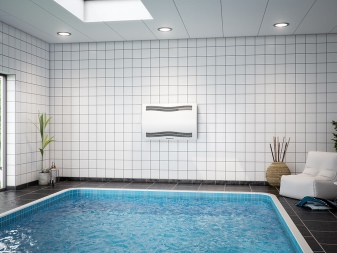

By the degree of mobility
There are two levels of mobility for pool dehumidifiers:
- mobile;
- stationary.
The first category is not very large in size monoblock devices, which are usually purchased for use in saunas and small-sized pools, where the area of the water table will not exceed 40 square meters. These are usually compact floor-standing units or wall-mounted models that can even be installed on the floor.
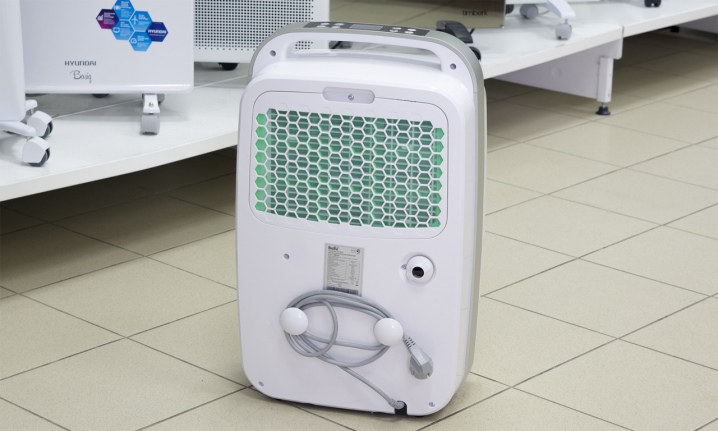
The second category of devices includes duct systems that are designed to drain air masses in pools where the evaporation area exceeds 40 square meters. Usually these are large-sized floor-standing devices that can be mounted both in a separate room for ventilation, and directly in the space where the pool is located.

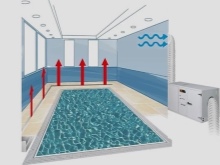
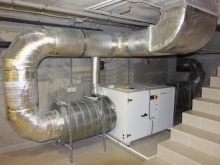
By placement method
According to the placement method, there are 3 categories of dehumidification equipment:
- wall-mounted;
- channel;
- floor.
If we talk about wall-mounted, then such devices will be an excellent solution where you want to save as much floor space as possible. The advantages of such devices are low cost, the ability to paint the device in the color of the interior of the room, and also to optimize the hidden drainage of excess moisture.
True, not a single device of this type can maintain optimal humidity, which is why it is better to buy several such devices.
The strength of the floor-standing devices is that an area near the pool is allocated for installation, and if necessary, it can be easily moved to some other place.
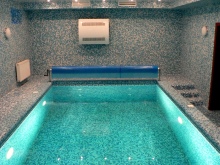

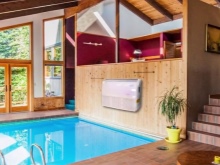
Duct models will be the best solution for large rooms. Such equipment is usually mounted in a room adjacent to the pool, and the inflow and exhaust of air is carried out through special channels located around the perimeter of the room where the pool is located. The advantages of this type of dehumidifier will be quite high productivity and efficiency, no noise during operation, the ability to add air masses to the system. But if we talk about the shortcomings, then it should be said that such systems need constant maintenance. In addition, they are quite expensive, and their installation is a complex procedure that must be carried out exclusively by a specialist.
It should be added that any category of dehumidifiers can be ducted. Even wall and floor counterparts can be easily placed in some kind of technical room, bringing the necessary communications to them.
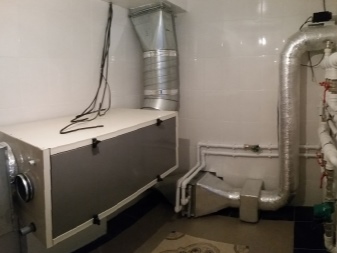
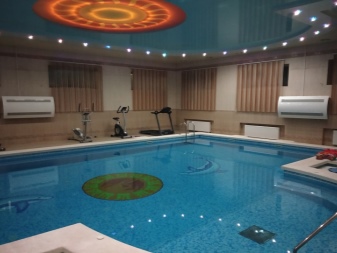
By the principle of work
According to this criterion, pool dehumidifiers are:
- condensing;
- assimilation;
- adsorptive.
If we talk about condensation models, then the principle of their operation is based on the fact that the cooler transports moist air to the devices and moves it to the refrigeration circuit, which has a heat exchanger. When the air interacts with it, the heat exchanger heats up. The refrigerant is piped to it, which transforms from liquid to gas, and cools it. Due to the fact that there is a constant temperature drop, condensation forms on the heat exchanger body. The refrigerant enters the compressor where it is transformed into liquid. During this transformation, heat is released, warming the environment, after which it becomes possible to dehumidify the air in the room.
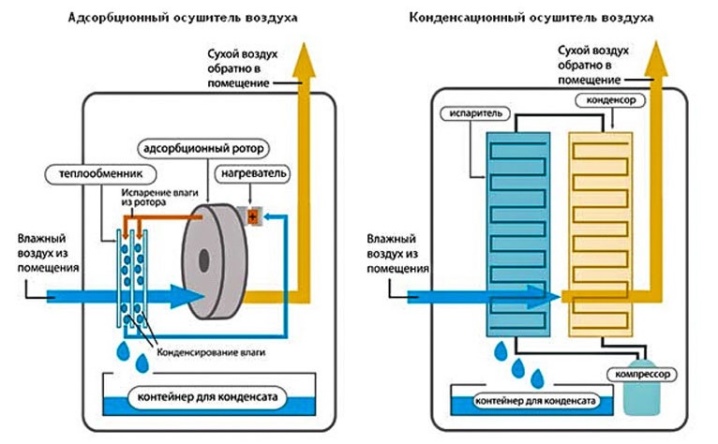
The principle of operation of assimilation devices is to eliminate humid air masses and replace them with dry ones, which are taken from outside the room. The use of this type of device is carried out infrequently due to the fact that they have low performance and high energy consumption.
Adsorption models can dehumidify indoor air due to the use of adsorbents. These are special substances that have the property of absorbing various liquids. The process is carried out using several fans. The first one sucks in air from the room and moves it to the rotor, where the said substance enters into a chemical reaction with it and dries it. Dry air enters the distribution chamber, where it is divided into regeneration and return outlet.
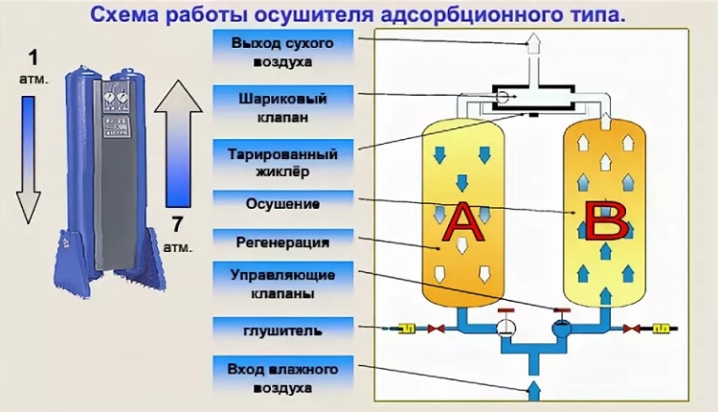
The regeneration air is heated in a separate compartment and, with the help of another fan, moves to the rotor, where condensate is blown out and collected in a special container. It can also be simply brought out into the street. And the third fan moves dry air back to the room where the pool is located. The advantages of this method are:
- power;
- good performance indicators;
- resistance to cold;
- the possibility of a significant decrease in humidity up to 30%.
True, this method also has disadvantages:
- high price;
- some models heat the air too much;
- sometimes a mandatory installation of a hose is required to remove moisture to the street;
- such devices take up a lot of space.
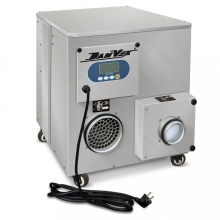
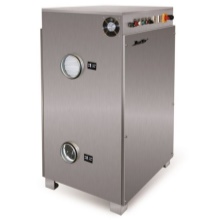

Popular models
This market segment is not that large, given that the demand for such devices will not be too great. The market leaders in this segment are companies Dantherm, Mycond, Calorex. Let's tell you a little more about the products of each brand.
Dantherm originally from Denmark, has specialized in the production of stationary and mobile drying plants for a long time. Dantherm models offer high performance and power. At the same time, they are distinguished by silent work. The most popular models are CDP165, CDP125, CDP75.Their installation can be carried out both on the wall and on the floor.
It is important that a hose for inlet and outlet of condensate is supplied in the kit, which allows us to call these models universal.
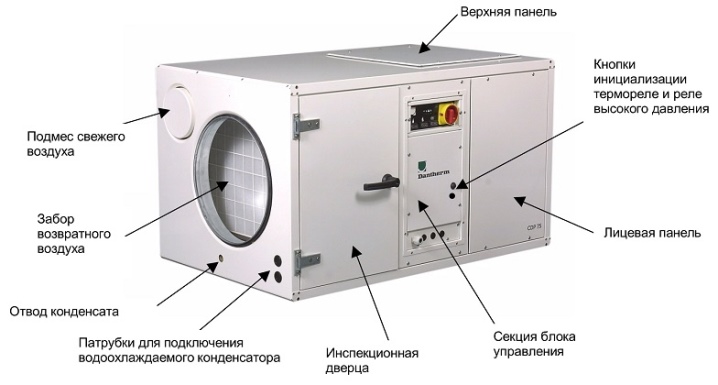
Calorex - a company from England, which specializes in the production of devices for large areas with artificial reservoirs. The most popular models of the company are DH33, DH66, DH110, DH55.
They can automatically control air exchange and water heating in the building, which makes the situation there as comfortable as possible.

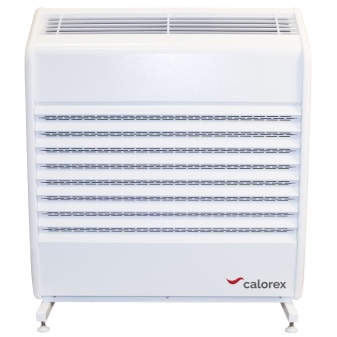
The last company mentioned - British firm Mycond, which for a long time has been creating high-quality and very efficient in terms of energy consumption dehumidifiers for rooms with a swimming pool. Models MBA7A, MBA12A and MBA17A are the most popular and are distinguished by their high performance, as well as an automatic control system, which makes them much easier to use.
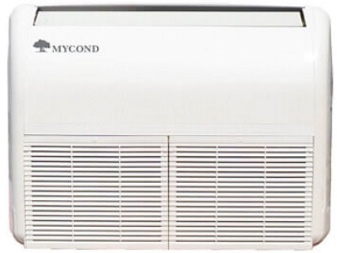
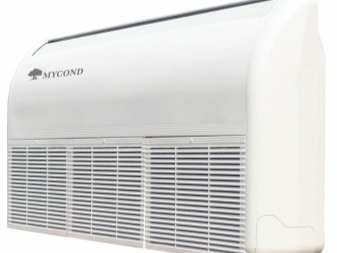
How to choose?
As you can see, although there are a small number of manufacturers on the market, their model range is quite large, which makes it difficult to make the right choice.
Before buying a particular model of an air dryer, you should clearly understand for what purposes it will be used. It is necessary to take into account the presence or absence of additional functions, as well as calculate the area of the pool and the room where it is located. All this will help to make the right and most effective choice.
There are a number of things to consider in order to find the right dehumidifier.
- The volume of the room where this equipment will be used. Calculating it is easy. This requires multiplying the total length of the room by its height and width.
- The most energy efficient dehumidifier should be selected.
- Noise level is also an important factor to look out for.
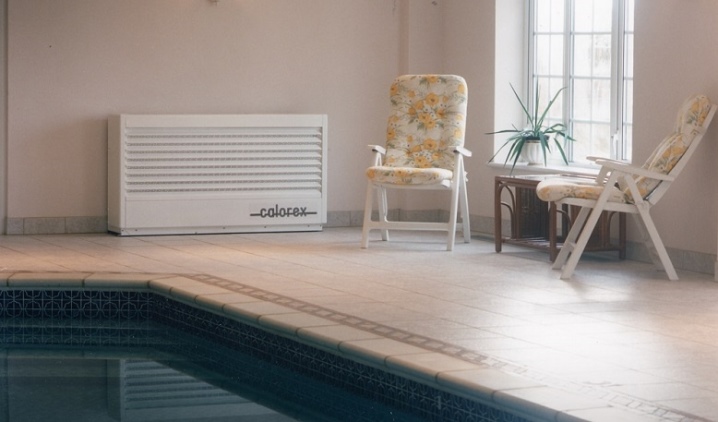
By the way, about the last moment, it should be said that it is best to check how the device makes noise while still in the store. This will allow you to make sure that the device does not interfere with the operation. And not always the values displayed in decibels can be imagined by a person. For this reason, it is better to start the device and make sure that its operation suits you according to this criterion.
By the way, if the equipment will be used in a region where there is high humidity and at the same time an arid climate with little rainfall, then it is better to give preference to a model with drainage... Then all the moisture through special drains will enter the tank, from where it can be used for some domestic needs.
When choosing such a device, you should also pay attention to the manufacturer. From the best side, the products of European manufacturers have proven themselves, which demonstrate high efficiency and reliability.
In addition, European firms give a significantly longer warranty period for their products than Asian or other manufacturing firms.
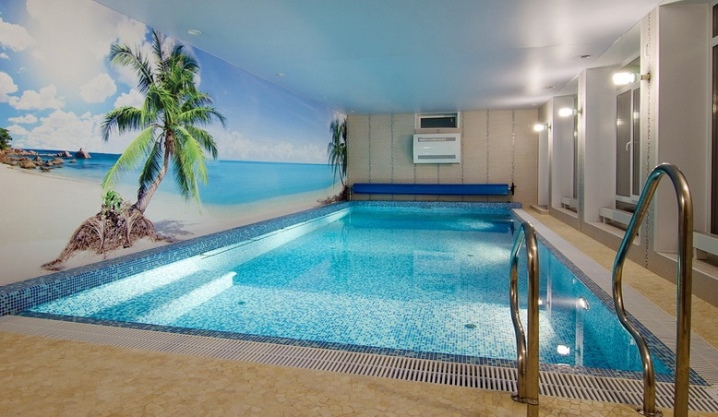
You can find out how to choose a dehumidifier for your pool below.



































































The comment was sent successfully.